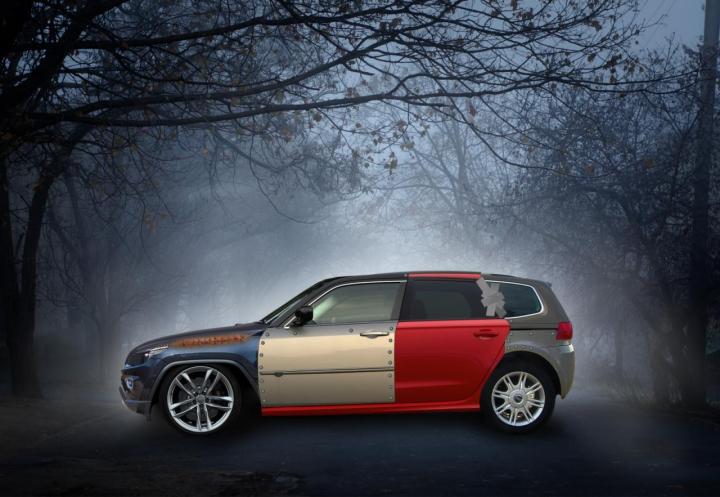
You get something that keeps mechanics up at night; an automotive amalgamation that would make Mary Shelly proud.
U.K. company Warranty Direct has released the details of its ‘nightmare’ car, a vehicle affectionately named the Horrific 40RR0R.
What the 40RR0R does is selects the worst rated components the motoring world has to offer and conceptually sticks them together. It uses Warranty Direct’s in-house Reliability Index as a guide, which “calculates trustworthiness of vehicles by measuring average cost of repair, frequency of failure, age, and mileage.”
The result looks like something out of Sleepy Hollow, and features only the worst of the worst.
Specifically, the ‘nightmare’ equips the engine from a BMW M5 (2004-2011), the suspension from an Audi RS6 (2002 – 2011), the gearbox from a Jeep Grand Cherokee (2006 – present), the electrics from the Mercedes-Benz R-Class (2004 – present), the brakes from a Fiat Multipla (1999 – 2005), the air conditioning from the SEAT Alhambra (1996 – present), and the steering from the Chrysler 300C (2005 – present).
According to the British firm, the average car scores around 100 in the RI. The Horrific 40RR0R earns an RI of nearly 500, and yes, higher numbers are bad. The company estimates the fictional vehicle would cost around $890 each time it breaks down every other month.
Some troubling facts were bundled along with the press release as well, like the revelation that nearly forty percent of Audi RS6s (from the years indicated) require axle and suspension repair each year, and twenty five percent of BMW M5s require work done to the engine in the same time frame. Additionally, the Chrysler 300C received low marks, with over ten percent heading to the doctor with steering issues annually.
Warranty Direct Managing Director David Gerrans says the “large variety of vehicles that goes into the concoction proves how typically reliable cars can be dragged down by one poorly-performing part.”
Just in time for Halloween.


